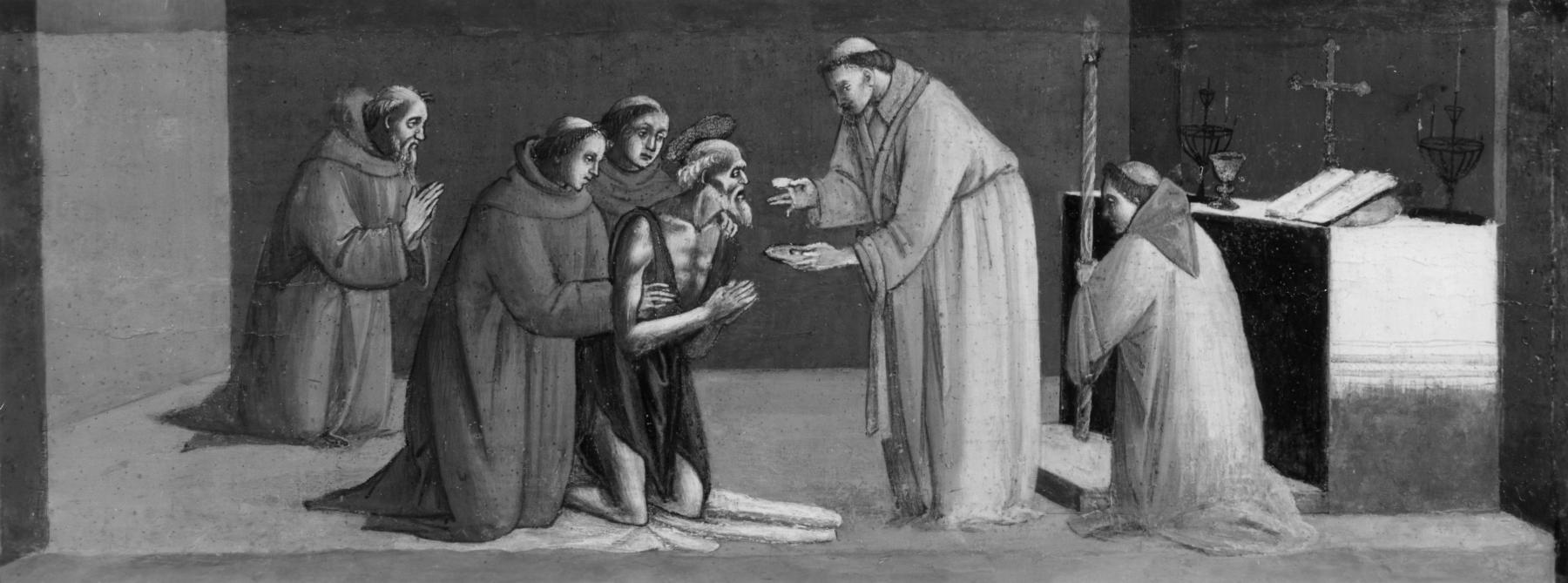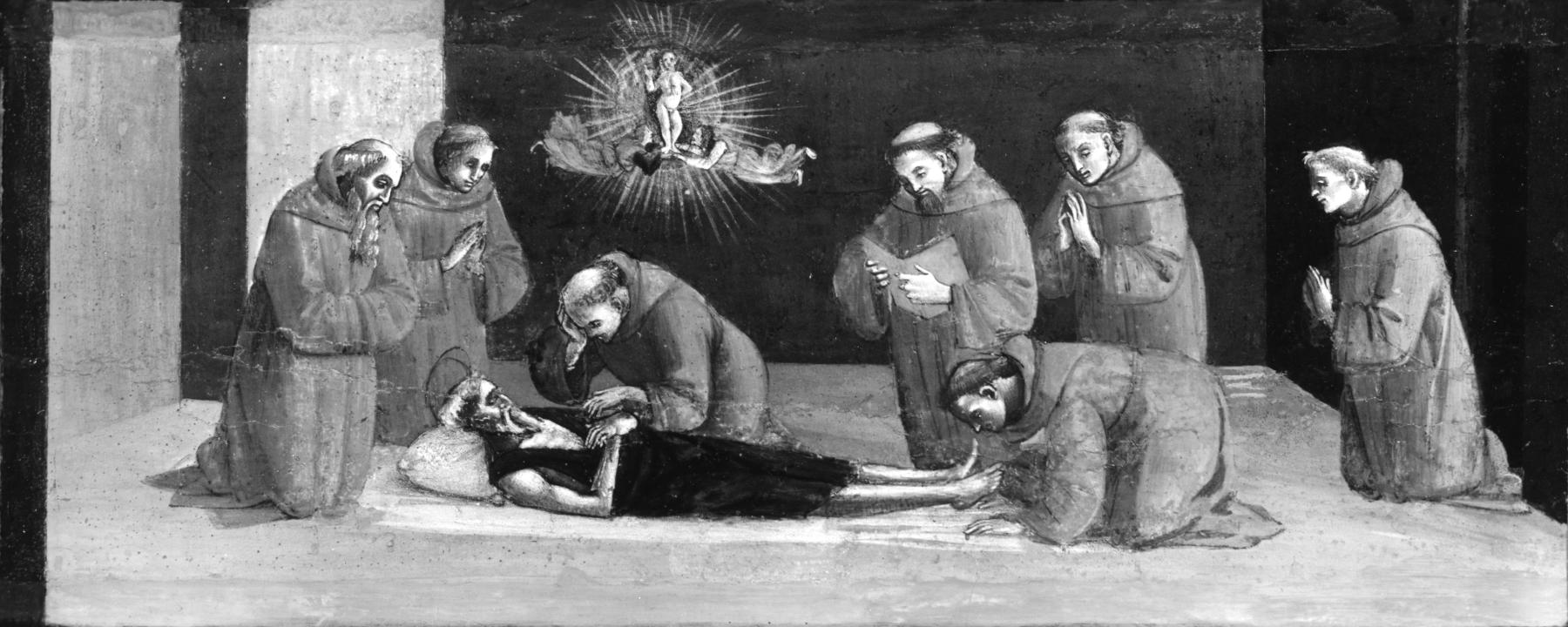Group of Three Panels: Last Communion of St. Jerome, The Man of Sorrows, The Death of St. Jerome
(Renaissance Europe )
These three panels were once the “predella,” or base, of a large altarpiece. Predellas are often painted to depict scenes from the lives of the figures represented in the larger central section of the altarpiece. This predella includes two scenes from the life of Saint Jerome, one of the four Latin church fathers who was renowned during the Renaissance for both his learning and piety. The panel at the left (37.428a) shows the elderly Jerome, gaunt and haggard after spending years meditating in the wilderness, receiving his last communion. The panel at the right (37.428c) shows his funeral, with the saint’s soul, in the form of an infant, carried to heaven by angels. The panel at the center (37.428b) depicts the Virgin and the apostle John mourning the dead Christ, held upright in his tomb and displaying his wounds to the viewer—an image popularly known as the Man of Sorrows. The main portion of the altarpiece, depicting Saint Jerome in the wilderness, is now at the Museo di San Salvi in Florence. The altarpiece and its predella were painted in the late 1490s by the Florentine artist Bartolomeo di Giovanni for the church of San Vincenzo d’Annalena, Florence.
Provenance
Provenance (from the French provenir, 'to come from/forth') is the chronology of the ownership, custody, or location of a historical object. Learn more about provenance at the Walters.
Don Marcello Massarenti Collection, Rome [date and mode of acquisition unknown] [1881 catalogue: nos. 178, 179, 180; 1897 catalogue: nos. 282, 283, 284, as Melozzo da Forlì]; Henry Walters, Baltimore, 1902, by purchase; Walters Art Museum, 1931, by bequest.
Geographies
Italy, Florence (Place of Origin)
Measurements
Painted surface H of the Last Communion of St. Jerome: 7 5/16 x W: 18 1/2 x D: 11/16 in. (18.6 x 47 x 1.7 cm); Painted surface H of the Man of Sorrows: 7 1/8 x W: 18 1/8 x D: 11/16 in. (18.1 x 46.1 x 1.7 cm); Painted surface H of the Death of St. Jerome: 7 3/16 x W: 18 9/16 x D: 9/16 in. (18.3 x 47.1 x 1.5 cm)
Credit Line
Acquired by Henry Walters with the Massarenti Collection, 1902
Location in Museum
Not on view
Accession Number
In libraries, galleries, museums, and archives, an accession number is a unique identifier assigned to each object in the collection.
In libraries, galleries, museums, and archives, an accession number is a unique identifier assigned to each object in the collection.
37.428






